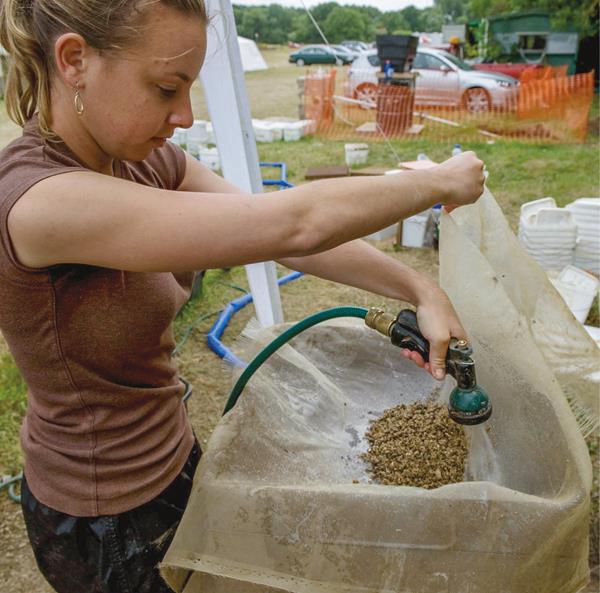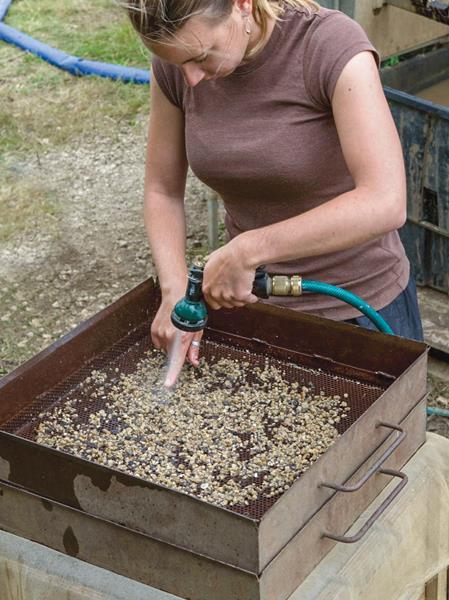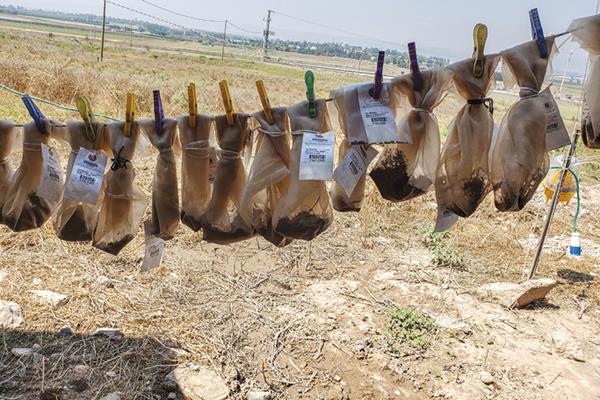



Flotation (also called “water separation”) is a method of recovering minute archaeological materials from soil—especially carbonized plant remains—that would otherwise escape an archaeologist’s eye. The evidence obtained through this inexpensive technique can provide precious data about the ancient economy, rituals, diet, and natural environment.
Here’s how it works:
1 Soil samples are placed on a cloth in a tank, and water is gently flowed up, causing lighter plant remains (light fraction) to float.
2 Stirring the dirt by hand helps in releasing plant remains, which flow over into the fine mesh, while the heavier particles (heavy fraction) settle at the bottom of the tank.
3 The heavy fraction is scanned for archaeological material and the stubborn chunks of clay are sprayed and gently pushed against the mesh in a process called “water screening.”
Already a library member? Log in here.
Institution user? Log in with your IP address.

